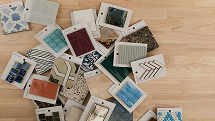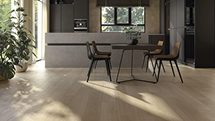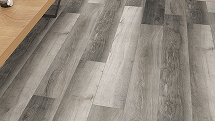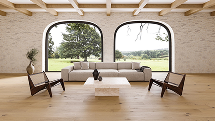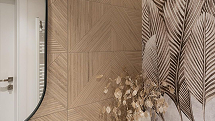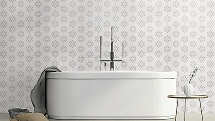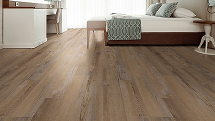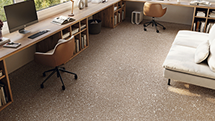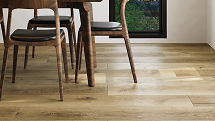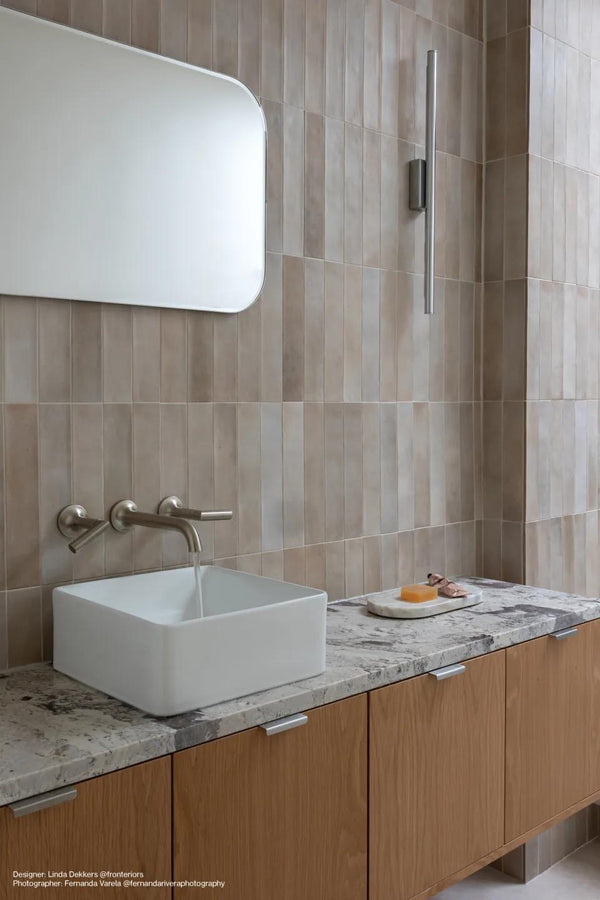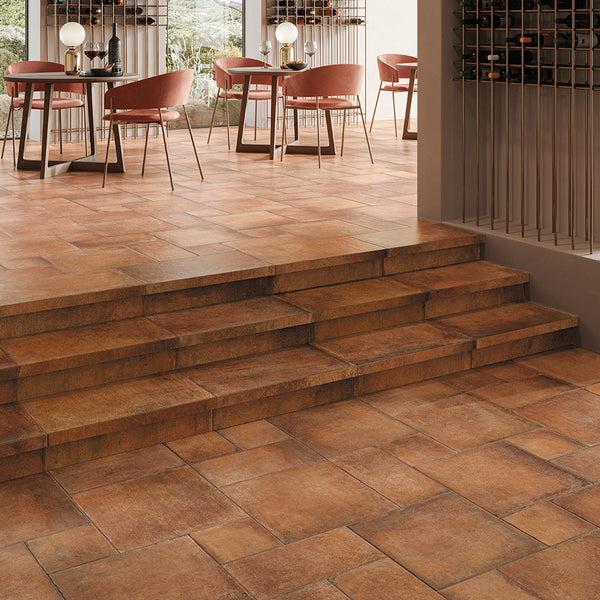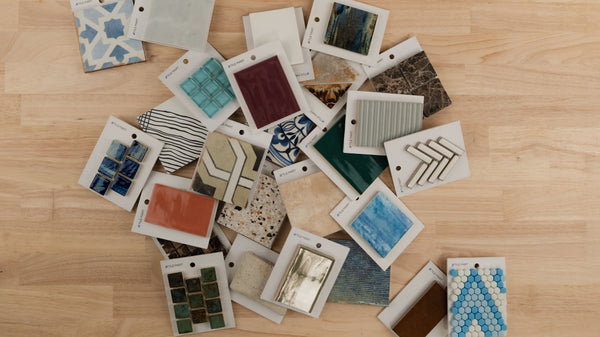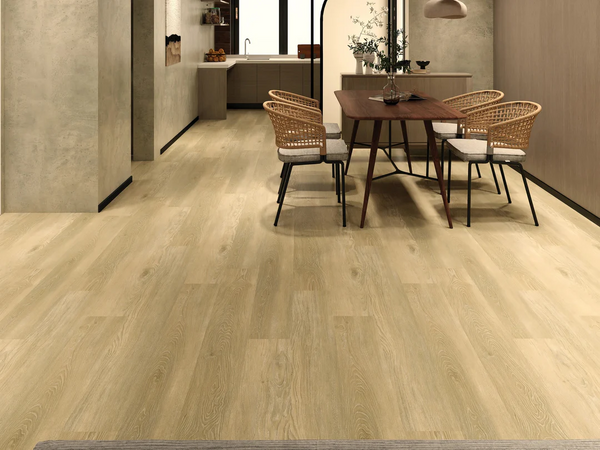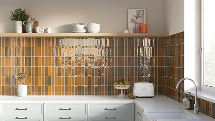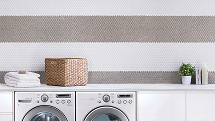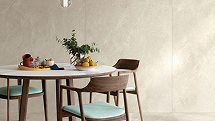Subway Tiles Guide: Boost Your Home's Style & Value
Ever wonder why subway tiles are called that? It's not just a fancy name. They first shone in New York’s underground train stations, captivating the early 20th-century public with their gleaming surfaces and stain-resistant prowess. Fast forward to today, these tiles have zipped from the subway to our kitchens and bathrooms faster than you can say "mind the gap." Why? Because they’re practical, yes, but also because there’s something irresistibly classic about them.
The charm of subway tiles lies not just in their history or functionality. Their simple yet versatile design has stood the test of time; evolving into various sizes, colors, and textures while maintaining that iconic look. From sleek and modern kitchen backsplashes to cozy fireplace surrounds - if walls could talk, they’d probably thank us for dressing them up in such timeless attire.
No matter your home style or decor theme, there's a way for these ceramic beauties to fit right in. Embarking on this exploration, we uncover the profound influence of subway tiles, transcending their simple origins to redefine spaces. Subway tiles, with their mix of traditional roots and contemporary flair, effortlessly infuse any room with a sophisticated charm that's both adaptable and striking. So let’s dive in and discover the endless possibilities that subway tiles offer.
Table Of Contents:
- The Timeless Appeal of Subway Tiles
- Why Are They Called Subway Tiles?
- The Evolution of Subway Tile Design
- Choosing the Right Material for Your Subway Tiles
- Porcelain vs. Ceramic: What's the Difference?
- Glass and Natural Stone Options for an Elegant Touch
- Where to Install Subway Tiles for Maximum Impact
- Transforming Kitchens with Backsplash Tiles
- Enhancing Bathrooms with Durable Wall Options
- Popular Patterns and Sizes in Subway Tile Design
- Classic Patterns That Never Go Out of Style
- How to Choose the Right Size for Your Space
- Installation Tips for a Perfect Subway Tile Backsplash
- Preparing Your Surface for Tile Installation
- Tools You'll Need for a Smooth Process
- Maintaining Your Subway Tiles Over Time
- Cleaning Tips to Keep Your Tiles Looking New
- Understanding the Durability of Different Materials
- Incorporating Subway Tiles into Various Design Styles
- Achieving a Classic Look with White Matte Tiles
- Adding Character with Colored and Textured Options
- The Best Places to Shop for Quality Subway Tiles
- Online Resources vs. Local Stores
- What to Look For in a Quality Tile Provider
- Frequently Asked Questions About Subway Tile Projects
- Sealing Your Tiles for Longevity
- Easy Maintenance Tips for Busy Homeowners
- Conclusion
The Timeless Appeal of Subway Tiles
Why Are They Called Subway Tiles?
Ever wondered why they're called subway tiles? It's not because they're fans of sandwiches. These beauties got their name from where they were first showcased - New York City's subway stations in the early 1900s. That’s right, those gleaming white tiles that brightened up underground commutes are the same ones we love slapping onto our kitchen backsplashes today.
And believe me, there’s something wildly captivating about knowing your kitchen shares a piece of Big Apple history. Makes you want to whip up a New York cheesecake just for the heck of it, doesn't it?
The Evolution of Subway Tile Design
Gone are the days when subway tiles were just plain ol' rectangles on the wall. Oh no, my friend. We've seen an explosion in styles, colors, and materials that would make even a tile connoisseur do a double take.
- Ceramic & Porcelain: Still rocking hard with durability and style.
- Glass: For that touch of elegance or color pop behind your sink.
- Natural Stone: Because sometimes you need that earthy vibe cooking along with your pot roast.
- Metallic Finishes: When you’re feeling extra fancy and ready to dazzle dinner guests (or yourself).
This evolution isn’t just about looks; it's also about functionality. Today’s subway tiles come slip-resistant for floors and frost-proof for outdoor use – yes, patios can now look as chic as Parisian cafés.
We’ve journeyed far from those humble beginnings in NYC train stations (still very much en vogue, by the way). The versatility means whether you’re jazzing up your bathroom shower or giving your fireplace surround some heat-resistant flair - there's a subway tile out there screaming your name.
In essence? These aren't just any old wall tiles; these are icons — versatile chameleons ready to transform spaces while whispering tales of yesteryears’ urban landscapes into modern-day homes. They seamlessly weave the past into present decor, offering an unparalleled fusion of age-old charm and modern sophistication for anyone desiring to enrich their habitat with enduring grace.
Key Takeaway:
Subway tiles aren't just for looks; they're steeped in New York City history and have evolved far beyond their humble beginnings. With a range of materials like ceramic, glass, and even metallic finishes, these versatile beauties can add elegance or an earthy vibe to any space. They mix the charm of the early 1900s with modern functionality, making them perfect for adding timeless style to your home.
Choosing the Right Material for Your Subway Tiles
Porcelain vs. Ceramic: What's the Difference?
You're standing in the tile shop, surrounded by beautiful tiles, and you can't help but wonder: "What on earth is the difference between porcelain and ceramic tiles?"
Let's break it down. Both are part of the ceramic family, sure. But here’s where they part ways:
- Ceramic tile: Made from a mixture of clays that are fired at a high temperature but not as high as porcelain. This makes them slightly less dense and more porous than their porcelain cousins.
- Porcelain tile: It takes everything up a notch. Fired at an even higher temperature, this one comes out denser and less porous – which means it’s tougher against spills and stains.
The choice? Well, if you've got kids or pets racing around like there's no tomorrow – think kitchen floors or mudrooms – then porcelain might just be your new best friend because of its durability. On the flip side though? If we’re talking about walls that don’t see much action (other than admiring glances), save some bucks with ceramic.
Glass and Natural Stone Options for an Elegant Touch
Sometimes you want to kick things up a notch - enter glass subway tile and natural stone options.
- Glass subway tile: They sparkle; they shine; they add depth without overwhelming small spaces like bathrooms or backsplashes behind sinks.
- Natural stone tile: From travertine to marble to slate – each piece is unique with its veining & textures bringing warmth into any room it graces.
In love with both looks? Who says you have to choose. Mixing materials can give your space character plus added dimension - imagine stainless steel accents thrown into the mix...
WallandTile.com suggests "Subway tiles made their debut in New York train stations in the early 1900s" proving how versatile these pieces truly are — moving beyond kitchens & baths right into fireplace surrounds & laundry rooms.
So whether your heart beats faster for glossy finishes or rugged charm speaks directly to your soul... remember— when picking out the perfect subway tiles, material really does matter.
Key Takeaway:
Deciding between porcelain and ceramic tiles? Porcelain's durability shines in high-traffic areas, while ceramic saves cash for quieter spots. Glass and natural stone add elegance, mixing materials brings character. Remember, the right material elevates your space's style.
Where to Install Subway Tiles for Maximum Impact
Transforming Kitchens with Backsplash Tiles
A kitchen backsplash isn't just a practical necessity; it's your style statement. Why not express your unique flair by opting for subway tiles, which effortlessly blend functionality with elegance? They've moved from the underground tunnels of New York to our kitchens, bringing a slice of history and heaps of charm.
The right subway tile backsplash can turn cooking sessions into an aesthetically pleasing experience. Imagine simmering sauces against a backdrop of glossy white or vibrant colored tiles – it’s not just food you’re making; you're crafting memories in a space you love.
Enhancing Bathrooms with Durable Wall Options
Bathrooms are sanctuaries. A place where we start and end our day should reflect comfort, cleanliness, and yes - beauty. Subway tiles in the bathroom do exactly that. Subway tiles, with their modest shape, transform the boundaries of your shower or the embrace of your tub into a statement of sophistication and charm.
Durability meets design when subway tiles take over your bathroom shower walls. Water-resistant and easy-to-clean surfaces mean less time worrying about maintenance and more time enjoying spa vibes at home.
In both kitchens and bathrooms (and hey, why not throw in fireplace surrounds while we're at it?), subway tiles offer versatility that few other materials can match. It's all about picking the right color, texture, and layout pattern - then watching as 'ordinary' transforms into 'extraordinary'. So go ahead: mix modernity with tradition; blend function with form—let those subways lead you somewhere stunning.
Popular Patterns and Sizes in Subway Tile Design
Classic Patterns That Never Go Out of Style
You've seen them, you've loved them, but have you ever thought about the timeless charm they bring to any space? Yes, I'm talking about those classic subway tile patterns. Embark on a nostalgic journey as we delve into beloved designs that continue to stand the test of time, never fading into obscurity.
- Basket Weave: This pattern interlocks tiles in a way that mimics the weave of a basket. It adds texture and depth, making your wall or floor pop with intrigue.
- Herringbone: Sharp angles meet symmetry here. The herringbone pattern offers dynamic visuals that can make any room look instantly more sophisticated.
- Penny Round: For those who love curves, penny round tiles provide softness with their circular shape while keeping things neat and orderly.
All these styles share one thing: they never get old. Whether it’s for your bathroom oasis or kitchen backsplash heaven, sticking to these classics means choosing everlasting appeal over fleeting trends.
How to Choose the Right Size for Your Space
The size game is crucial when playing around with subway tiles; pick wrong, and you could either overwhelm or underwhelm your space. But don't fret. Here's how you nail it every time:
- If bigger feels better, go large with 4x12 inches tiles—ideal for making small rooms feel grander without cluttering visual real estate.
- In tight spaces like narrow bathrooms or cozy kitchens? Smaller sizes such as 2x4 inches work wonders by adding detail without overpowering other elements in the room.
Surely now you're equipped not just to choose but also ace this whole subway tile saga from start to finish—because yes my friend—you’ve got this.
Installation Tips for a Perfect Subway Tile Backsplash
Preparing Your Surface for Tile Installation
Before we embark on the enchanting voyage through subway tile territory, it's essential to chat about the groundwork necessary. Yes, it might not be the most thrilling part of your renovation journey, but trust me—it's crucial. A well-prepared surface is like a blank canvas waiting for its masterpiece.
To start, make sure your wall is as smooth as an ice skating rink. Any bumps or dips? You'll want to fix those first. Next up: cleanliness is key. Dust or grease won't just magically disappear under your new tiles; they'll haunt you by making it harder for everything to stick properly.
Tools You'll Need for a Smooth Process
Gather round, DIY enthusiasts. It’s tool time—and nope, we’re not talking about that '90s TV show. For installing mosaic backsplashes, here’s what you’ll need:
- A notch trowel—think of this as your magic wand in ensuring adhesive spreads evenly.
- A tile cutter because unfortunately, our tiles don’t come with magical self-fitting powers (yet).
- Spacers—to keep things on the straight and narrow...literally.
- Last but definitely not least—a leveler unless wavy lines are part of your aesthetic.
All set? Now remember: patience isn’t just a virtue; it’s an absolute must-have when doing any sort of tile installation.
Maintaining Your Subway Tiles Over Time
Cleaning Tips to Keep Your Tiles Looking New
Let's be real, we all want our subway tiles to look as fresh as the day they were installed. Good news? It's not rocket science. To ensure your tiles remain dazzling, here's a simple strategy you can follow.
- Sweep or vacuum regularly. This might sound like a no-brainer, but it’s your first line of defense against grime.
- Mild detergent is your friend. A gentle cleaner and warm water are all you need for routine washing. Harsh chemicals? Not so much.
- Tackle spills ASAP. The longer a spill sits, the more likely it is to stain, especially if you’re dealing with natural stone subway tiles that aren’t frost resistant or don't have high stain resistance. Quick action is key.
Understanding the Durability of Different Materials
Durability isn't just about surviving a knock or two; it's also about life expectancy and staying power in face of elements like moisture - crucial for areas prone to wetness or freezing temps.
- Ceramic: A popular choice because it balances durability with cost-effectiveness. Ceramic tends to resist stains well but may crack in extreme cold if not specifically frost-resistant.
- Porcelain: Step up from ceramic when talking toughness – porcelain brings its 'A' game being both highly durable and often frost resistant.
- Glass & Natural Stone: While glass offers that sleek look and stones bring unique beauty, they're typically less forgiving than their ceramic counterparts regarding stains unless sealed properly.
A deep dive into tile materials reveals one truth: understanding what you’ve got helps tailor care tactics ensuring longevity – whether that means embracing sealants for stone or opting for tougher porcelain in high-traffic zones.
Remember folks, maintenance doesn’t have to be mundane—it’s your ticket to timeless tile style.
Key Takeaway:
Keep your subway tiles shining with simple steps: regular sweeping, using mild detergent, and quick spill cleanups. Know your tile material - ceramic for cost-effectiveness, porcelain for toughness, and sealants for natural stone to ensure longevity and maintain that fresh look.
Incorporating Subway Tiles into Various Design Styles
Achieving a Classic Look with White Matte Tiles
Let's talk about white matte subway tiles. They're like the little black dress of home design - timeless, versatile, and always in style. These gems effortlessly metamorphose a room into an epitome of classic grace, exuding sophistication without seeming overdone. And let’s be real, who doesn’t want their space to whisper sophistication?
But it’s not just about looking pretty. White matte tiles reflect light beautifully, making your room look brighter and bigger – an instant facelift. So if you’re aiming for that crisp, clean look that never goes out of fashion? The solution you're searching for is staring you right in the face.
Adding Character with Colored and Textured Options
Gone are the days when subway tiles were synonymous only with sterile white rectangles on a wall. Nowadays, it's all about mixing up hues and adding depth with different surfaces.
- Bold Colors: Feeling adventurous? Splash some color onto those walls. A vibrant blue or sunny yellow can inject personality into even the most mundane spaces.
- Rustic Charm: Texture brings warmth to minimalistic designs. Think crackle glaze finishes or hand-molded edges for that cozy feel.
- Glossy Finishes: For those after a bit more glamor, glossy subway tiles catch the light just right, creating an ambiance filled with luxury vibes.
The beauty of these options lies in their ability to add character while maintaining versatility across various design styles. Whether you’re going full-on modern twist or sticking closer to traditional roots - colored and textured subway tiles have got you covered.
To wrap up: think beyond plain Jane when considering subway tile backdrops for your next project; play around with hues and reliefs instead because why settle for ordinary when extraordinary is within reach?
Key Takeaway:
White matte subway tiles offer timeless elegance, making spaces look brighter and bigger. But don't stop there - dive into colors and textures to add personality or luxury vibes to any design style. Why settle for ordinary when extraordinary options are within reach?
There we have it—a quick guide on navigating this tiled jungle we call home design. Whether opting for brick-and-mortar charm or aiming to infuse a space with your unique flair, remember that the foundation of any great design lies in its details. So, dive into textures, colors, and patterns; they're your best friends in crafting spaces that truly feel like home.
Key Takeaway:
When sprucing up your space with subway tiles, weigh the perks of local shops against online stores. Feel and see tiles in person locally or enjoy a wider selection and better deals online. Always check for quality, variety, and stellar customer service to find 'the one' that makes your design dreams come true.
Frequently Asked Questions About Subway Tile Projects
Sealing Your Tiles for Longevity
So, you've laid down those sleek subway tiles and your space is looking sharp. But wait, should you seal subway tiles? Absolutely. Sealing isn't just an extra step; it's the hero move that keeps your tiles looking fresh for years.
Think of sealing as a protective shield against stains, moisture, and wear-and-tear. Especially in areas like kitchens or bathrooms where spills and splashes are part of daily life. Sealing is essentially about keeping everything looking fresh and new without too much trouble.
Easy Maintenance Tips for Busy Homeowners
"Is subway tile hard to maintain?" Not at all. In fact, they're pretty low-maintenance—another reason to love them even more.
- Cleaning: A gentle cleaner and a soft cloth are your best friends here. Avoid harsh chemicals which can dull the finish over time.
- Daily Care: Wipe up spills as soon as they happen to prevent staining—particularly on lighter-colored grout lines where coffee or wine could leave their mark.
- Routine Checks: Every now and then, give your tiled area a once-over check for any cracked tiles or loose grout. Catching these early makes fixing them easier (and cheaper).
Maintaining those stylish subway tiles, whether on your kitchen backsplash or bathroom shower walls, doesn’t have to be another full-time job. With the right care from day one—including sealing—they'll stay beautiful without stealing away too much of your precious downtime.
Loving this tidbit but thirsty for more insights? Explore the ways in which subway tiles can revamp various areas within our living spaces by delving into well-liked designs and dimensions right on this page.
Conclusion
So there you have it, the world of subway tiles laid bare. Starting as mere illuminators of New York's subterranean paths, these ceramic marvels have ascended to become the stars of our culinary and bathing spaces, showcasing that elegance is truly timeless. It’s clear - whether you're jazzing up your backsplash or giving your bathroom that glossy magazine look, subway tiles are the way to go.
We've walked through the gritty details together; porcelain versus ceramic, matte white versus bold colors and textures. We’ve explored where they shine brightest and how to make sure they keep on sparkling. And let's not forget about making those patterns pop! Turns out, getting creative with size does matter.
This journey wasn’t just about covering walls; it was about uncovering possibilities. Subway tiles aren't just a choice; they’re a statement - one that says timeless over trendy every single time.
And hey, who knew choosing between glass or natural stone could feel so epic? Or that installing them could be such an adventure? Sure beats picking out paint colors (no offense to paint). But more than anything else we discovered is this: subway tiles bring something special into our homes – a blend of history, functionality, and sheer elegance that few other elements can match.
Remember though, while subway tiles offer endless opportunities for creativity and flair in design choices – what truly makes them stand out is how they reflect the stories we choose to tell within our spaces. So here’s my parting thought: Go forth with confidence knowing whatever tile tale you decide to tell will undoubtedly be remarkable because it's your unique story being told through design. Let those tiles shine as a testament to your personal style and vision.

